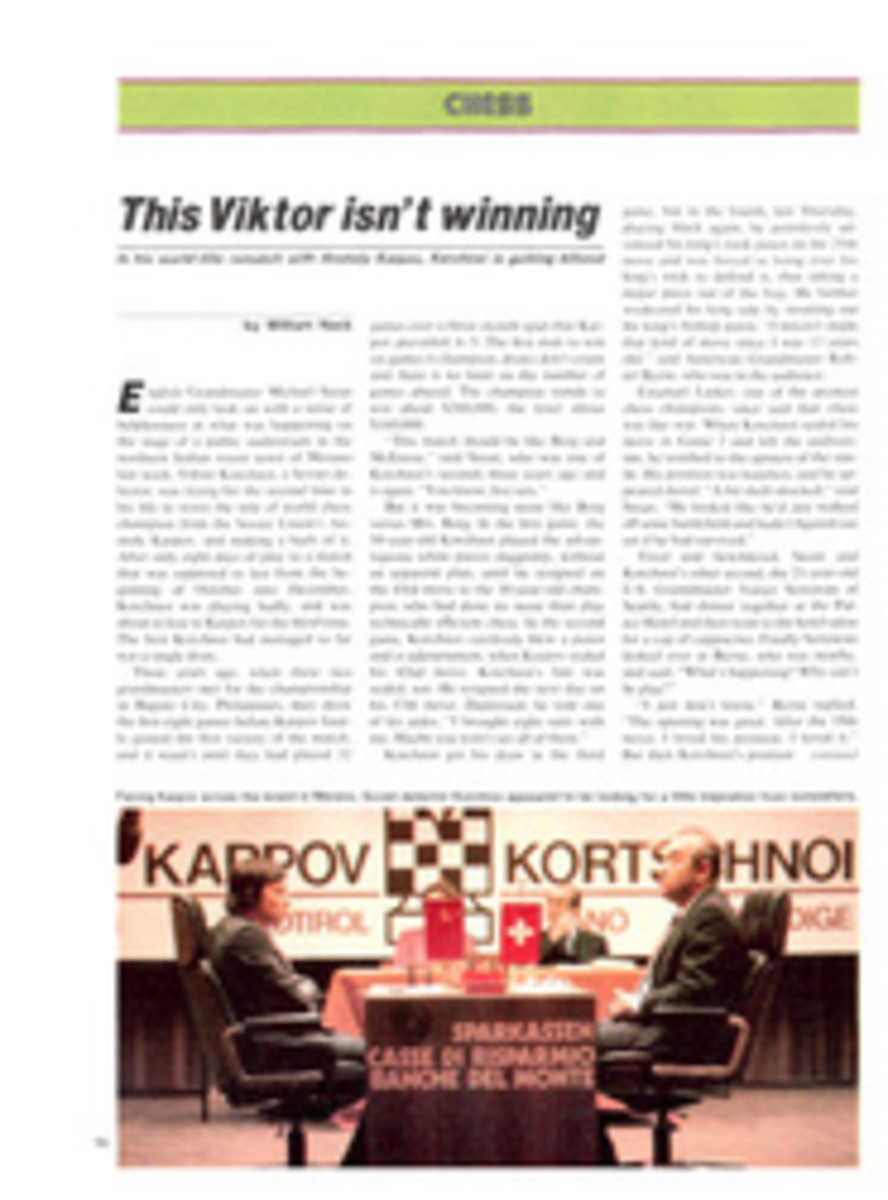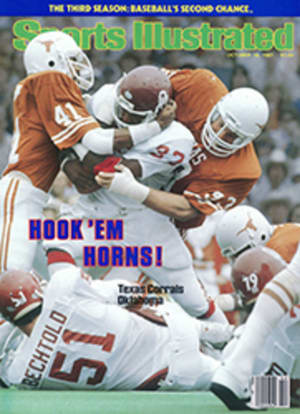
THE NEW BAY IN MASSACHUSETTS IS THAT OF THE COYOTE, EASTERN STYLE
God's dog, as the Navajo called the coyote, is alive and well and living, of all places, in Massachusetts. Of course, the coyote is alive, well and living in a lot of places, despite years of effort by sheep ranchers in the West to be rid of it. But now the coyote has found his way, not only to Massachusetts, but also to Connecticut, new Jersey and even suburban New York.
Coyotes first began appearing in Massachusetts, New England's most populous state, in the 1950s, migrating down from wilder Vermont after drifting gradually eastward for decades. According to some biologists, the coyotes bred along the way with Canada's Algonquin wolf; out of that union a subspecies now usually called the eastern coyote evolved. Other experts believe that the eastern subspecies evolved directly from the western one as the coyote adapted to a colder environment. Whatever its origin, the new subspecies, at 30 to 40 pounds, is heavier than its forebears and western cousins, and a successful colonizer.
Until this fall, Massachusetts coyotes enjoyed complete protection—a rare circumstance for the breed, even in the East. Rhode Island, too, has protected the animals thus far, since coyotes have yet to be an established species there, but in Vermont and Connecticut there's no posted season, which means coyotes can be hunted year-round, with trapping permitted from Nov. 1 to Feb. 28. New Hampshire also allows year-round hunting with no limitations on trapping. New York posts an October-to-March hunting and trapping season. In Maine the coyote may be hunted year-round and trapped during a limited season. Many Maine residents don't feel that such sport hunting and trapping are enough since the population is steadily rising; they regard the coyote as a deer slayer and are agitating to put a price—$50 has been suggested—on the head of every coyote. Shades of the old and new West, where coyote bounties are a tradition.
In Massachusetts, the coyote has been received more civilly, even welcomed as an unexpected guest with diverting and surprising qualities, one of which is that an animal so associated with wild places is able to successfully inhabit one of the nation's most densely populated states. Lest one think, however, that the Bay State has been entirely paved over, it should be remembered that Massachusetts is still 80% forested.
The coyote has invested the state's forests and fields and river valleys with mystery that wasn't there before—eerie howls from the hilltops, moon-cast shadows loping across the snowy landscape. Says Winston Saville, who heads the western district of the state's Division of Fisheries and Wildlife, "It's more exciting for me to see a coyote than a bear."
When the coyote first arrived in Saville's territory he received reports almost daily from a farmer in Worthington about the activities of those that had taken up residence on the man's land. The farmer watched the animals for the pleasure of it, although he worried that they would prey on his sheep. He contacted two biologists at nearby Hampshire College who had been studying coyote behavior. As an experiment, they leased him some dogs that had been bred in Greece, Italy, Turkey and Yugoslavia to guard sheep from predators. It worked. The sheep were protected without harm to the coyotes. In recent years, Saville says, it's likely that a few sheep have been killed by coyotes, but the only documented instance of coyote depredation was that inflicted on a cornfield in Westfield, which the coyotes had trampled and partly eaten, much as raccoons would.
Most Massachusetts coyotes range throughout the western half of the state, from the Quabbin Reservoir to the Berkshires; a few have been run over on the beltway around Boston. Estimating their population is difficult, but Richard Cronin, director of the state's wildlife unit, guesses that it is between 500 and 1,000.
Last April, Massachusetts' seven-man Board of Directors of Fisheries and Wildlife voted 4-3 to end the coyote's protected status and initiate a hunting season this year, concurrent with the fox season, Nov. 1 to the last day of February, excluding deer week in December. No limit was set for the number of animals a hunter could take. Before the board voted, two hearings were held to sample public opinion; no clear sentiment emerged.
Despite the board's actions, it's unlikely that the Massachusetts coyotes will suffer many casualties, mainly because few hunters seem ready to pursue them. "I don't know of anyone who's going after coyotes," says Saville. "Any kills will most likely be the result of accidental encounters. I don't think that I'd shoot one myself."
Besides, Cronin says, "the coyote is such a smart and elusive animal, hunters would be lucky to take 20 a year." In Cronin's view, one additional benefit of the season will be the placation of farmers who lose livestock to coyotes—or to dogs but blame coyotes. He cites the bear, which is a game species in Massachusetts, as an example: "A man may lose a beehive or two to a bear and he won't like it, but he won't get as mad about it as he would if he thought the animal was completely protected."
The Massachusetts board might have broken new ground in wildlife management if it had considered testimony not only on the coyote's natural history, but also on its spiritual history. The board could have admitted as exculpatory evidence the animal's special role as mythic figure. Surely a species deified by some Indian tribes from Mexico to the Pacific Northwest could be spared even a score of accidental encounters with hunters who had some other animals in mind.
The minutes of the April meeting ignore the coyote's renowned ingenuity and intelligence and don't suggest that the chance to observe the animal might be more enriching than the opportunity to shoot it.
"I have trailed a coyote often, going across country," writes Mary Austin in The Land of Little Rain..."and found his track such as a man, a very intelligent man...and a little cautious, would make to the same point...and it is usually the best way...with the greatest economy of effort."
Those are Western observations, but a coyote, says J. Frank Dobie, author of The Voice of the Coyote, is a coyote anywhere you find it. He writes of George Frederick Ruxton, an Englishman who, while traveling through Colorado in the mid-1880s, declined to shoot a wolf that followed him from camp to camp, cleaning up the food he and his guide left behind. Few contemporaries would have failed to draw a bead, but it occurred to Ruxton that the wolf was interesting. And perhaps that's the simplest, most compelling claim for sanctuary in the case of the coyote in Massachusetts. It's too interesting to shoot.

